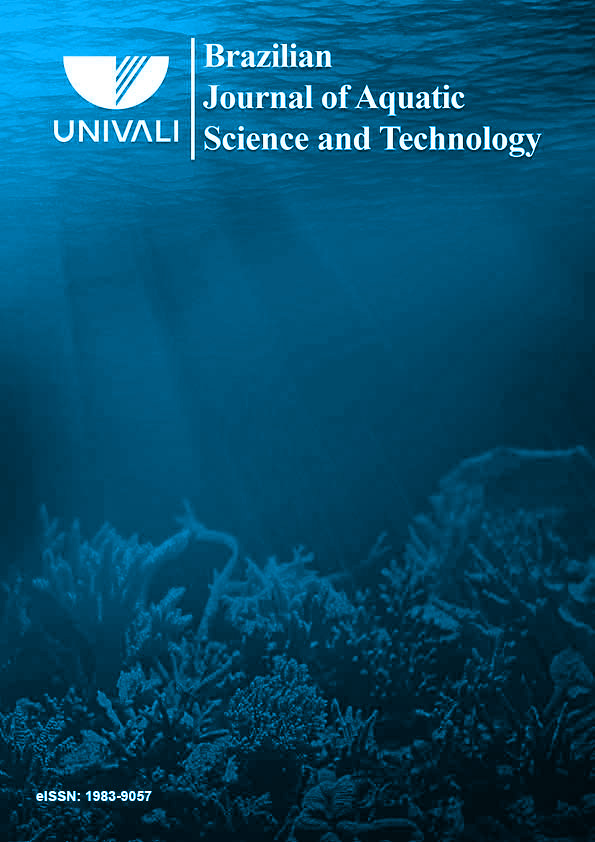Effect of pH and volume in the hatching of resistance cysts of the species Dendrocephalus brasiliensis Pesta, 1921 (Crustacea, Anostraca)
DOI:
https://doi.org/10.14210/bjast.v23n1.13700Abstract
Branchoneta is an option as live food for aquaculture and it is necessary to develop more studies to get information that makes possible its culture on a large scale. Our aim was to establish a method that results in a higher percentage hatching of D. brasiliensis. We analyzed if the cyst density could cause any significant difference in hatching; for that test we use 2 different conditions: (I) 15 ml glass tube (T1, T2, and T3) with 25 (twenty-five) cysts/repetition; and (II)Â Erlenmeyer of 150 ml (T4, T5, and T6) with 25 cysts/repetition totaling 75 cysts/treatment, with triplicates to all treatments. We also tested 3 different pH conditions: acid (pH 3), neutral (pH~7/distilled water) and alkaline (pH 8), all in natural light and temperature. We conclude that there is no difference between the treatments, for none of the conditions tested. But other results have to be considered as Hatching Speed index and the Average Hatching Time with best results for the treatments T3, T1, and T2, respectively. The density of 0.6 ml/cyst (glass tube) resulted in faster hatching, which shows the necessity of further studies to analyze the speed of hatching under different conditions of density. The relative frequency showed that the hatchings peak occurs in the second day. We conclude that pH and density, in this study, not influenced the beginning of the hatching process.Downloads
Published
Issue
Section
License
Authors who publish with this journal agree to the following terms:
1. Authors retain copyright and grant the journal right of first publication with the work simultaneously licensed under a Creative Commons Attribution License that allows others to share the work with an acknowledgement of the work's authorship and initial publication in this journal.
2. Authors are able to enter into separate, additional contractual arrangements for the non-exclusive distribution of the journal's published version of the work (e.g., post it to an institutional repository or publish it in a book), with an acknowledgement of its initial publication in this journal.
3. Authors are permitted and encouraged to post their work online (e.g., in institutional repositories or on their website) prior to and during the submission process, as it can lead to productive exchanges, as well as earlier and greater citation of published work (See The Effect of Open Access).

